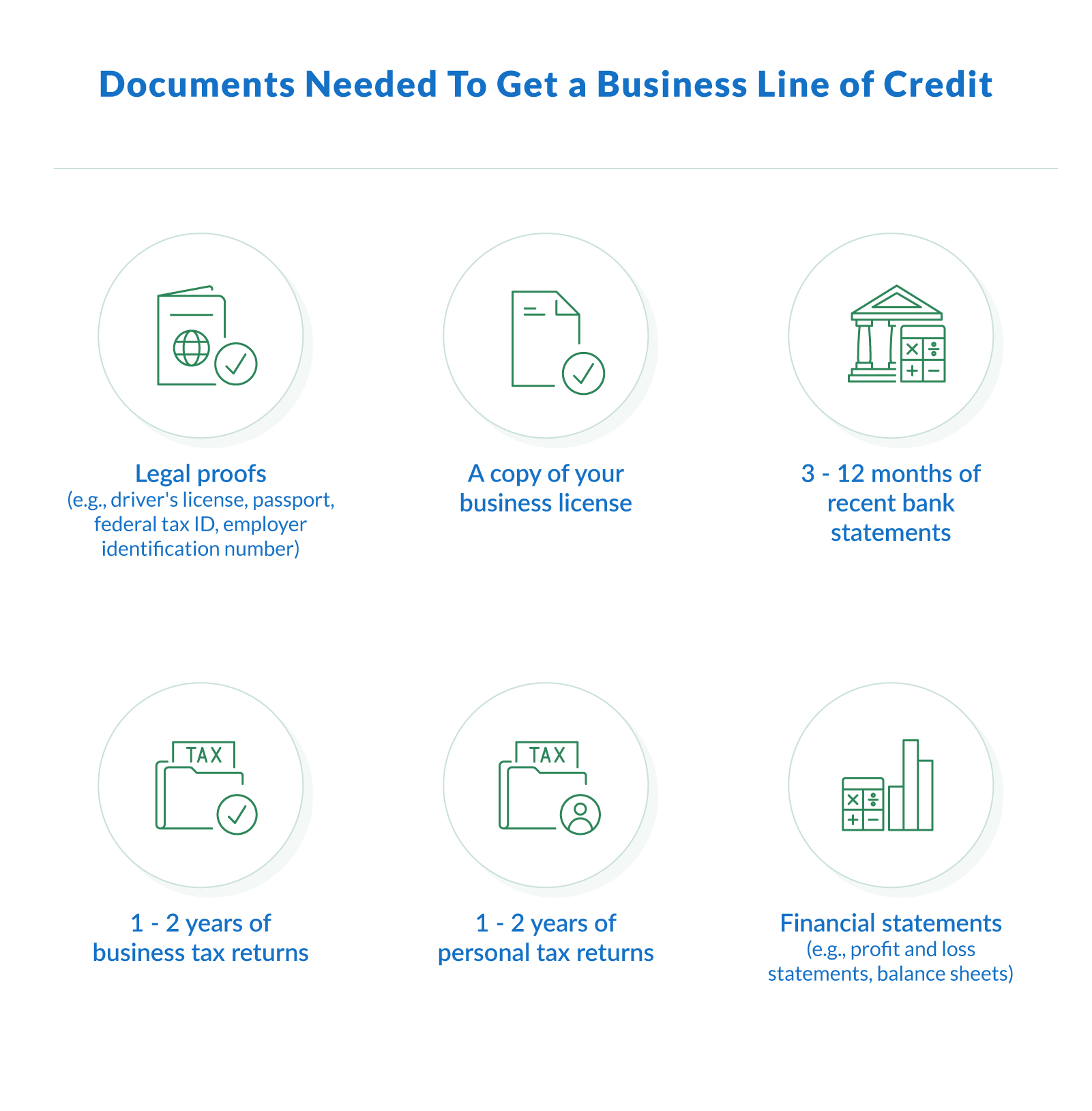Who Should Consider a Small Business Line of Credit?
Every business owner should consider getting a line of credit. It's something you should have, even if it's just to give you peace of mind that you have access to cash whenever your business needs it. When you know you don't have to worry about cash flow, making decisions in managing and expanding your business becomes easier.
Since it's a revolving credit where you only pay what you take out, you can continually access funds as you pay them back. This flexibility allows you to keep making growth-driven decisions, knowing you have the capital to support them.
Business Line of Credit for Startups
Startups often struggle to access traditional loans due to limited operating history or credit. A business line of credit can be a smart early tool for building financial stability and flexibility.
Here's how startups can benefit:
Cover early operating expenses. Use funds for payroll, inventory, or marketing while revenue ramps up.
Bridge irregular cash flow. A credit line helps offset gaps between paying vendors and getting paid by customers.
Build your credit profile. Responsible use of revolving credit helps establish business credit and improves future loan eligibility.
Avoid equity dilution. A line of credit offers working capital without giving up ownership, unlike raising capital from investors.
While some startup founders assume they won't qualify, many online lenders offer unsecured business lines of credit designed for newer companies. As long as you can show revenue, even as little as $10,000/month, you may be eligible.
Common Mistakes To Avoid When Using a Business Line of Credit
Using a business line of credit can be a powerful tool for managing cash flow, but business owners should be mindful of common pitfalls that could lead to financial strain.
Overusing the credit line. Treating a line of credit like a term loan and consistently maxing out the available funds can lead to high monthly payments and financial stress.
Not planning for repayment. Even though the repayment terms are flexible, failing to plan for repayment can result in accumulating debt and potential cash flow issues.
Ignoring interest rate changes. Some credit lines have variable interest rates, meaning your cost of borrowing could rise over time. Keeping track of changes ensures you don't end up with unexpectedly high costs.
Using credit for long-term investments. A business line of credit is best for short-term expenses, not large purchases like real estate or long-term expansion.
Failing to monitor credit utilization. A high utilization ratio can negatively impact your business credit score, potentially making it harder to secure future business loans or financing.
How Does a Small Business Line of Credit Work?
When you open a business line of credit, your business receives access to a fixed, predetermined credit limit. You can keep withdrawing and repaying your line of credit as often as you need. Just make sure you make the payments on time and don't exceed your credit limit.
Some smaller LOC accounts can be used like a credit card, as well. For example, you can withdraw cash through a credit card tied to the line of credit or write checks from the account right from the ATM. Some lenders also offer the option of transferring funds from the line of credit to your business bank account.
The advantage of this type of loan is that you only pay interest for any cash you withdraw, and interest rates can be fixed or variable. Variable interest rates typically follow any change in the economy.
Every month, you'll receive a statement displaying any changes in your account, such as payments made, any interest charges, and the available balance. Since every lender has its own conditions, you can expect different payment schedules. For example, a weekly, monthly, or periodic payment schedule is typical for business lines of credit. Some repayment periods may also depend on the amount borrowed.
Some lines of credit, especially those offered by traditional banks, may provide a grace period where you can draw funds and make interest-only payments. After the grace period, you'll enter a repayment period to start paying down the outstanding balance.
Similar to credit cards, additional charges like annual fees, draw fees, origination fees, and prepayment fees are not unusual for some LOCs. In addition, there might be monthly maintenance fees if you don't use the line of credit. Before you consider opening a credit line account, make sure you understand all the terms and conditions.
At Clarify Capital, we believe that success begins with being prepared financially. This is why we offer solutions to help you keep your operations running smoothly. Speak to a dedicated advisor today and see how a business line of credit can help you manage occasional cash flow shortages.
How Interest Rates Work on a Business Line of Credit
Interest on a business line of credit typically accrues only on the amount you draw, not the total credit limit, making it a flexible, cost-effective tool.
There are two types of interest rates you might see:
Fixed interest rate. This rate stays the same over your draw or repayment period. It makes budgeting easier, but it can be slightly higher upfront.
Variable interest rate. This rate may change based on market conditions or prime rate fluctuations. You might get a lower initial rate, but future payments can vary.
What can affect your rate:
Credit score. A stronger personal or business credit profile usually qualifies for better rates.
Time in business. Lenders often reward well-established businesses with lower APRs.
Revenue and cash flow. Higher, more consistent income signals lower risk and may reduce your rate.
Collateral. Secured credit lines tend to offer lower interest rates compared to unsecured ones.
Understanding how your rate is determined helps you compare offers and avoid unnecessary interest costs.
Costs and Fees
A business line of credit can be an affordable financing option, but it's important to understand the associated costs before applying. Beyond interest rates, lenders may charge additional fees that affect your total repayment amount. These can include:
Draw fees. Some providers charge a small fee each time you withdraw funds from your credit line.
Origination fees. This one-time fee is often based on your loan amount and is charged when the credit line is first opened.
Payment processing fees. If you make payments using a debit card or a non-automated method, you may incur extra charges.
Prepayment penalties. While many online lenders do not charge penalties for early repayment, some traditional banks or credit unions may.
Understanding these potential charges helps business owners, especially startups, avoid surprises and select the right provider for their needs.
Common Types of Business Lines of Credit
There are several types of business lines of credit to consider when looking for business financing. They include:
Secured Business Line of Credit
This type of LOC requires owners to pledge assets as collateral to secure the debt. If the business can't pay the line of credit, the lender will take ownership of the collateral as payment. Lenders may ask for personal or business property. Some lenders may even match the collateral to the type of debt. For example, since a line of credit is a short-term liability, it might be secured with short-term assets, such as accounts receivable or inventory. As a result, lenders don't often require capital assets, like real estate or equipment, to secure a LOC. Collateral lowers the risk for the lender, so a borrower may get a lower interest rate.
Unsecured Business Line of Credit
This type of LOC doesn't require assets as collateral, but most lenders will ask for a personal guarantee and a general lien. In addition, your business must be profitable, and you may need a strong credit history to qualify for an unsecured line of credit. However, unsecured lines of credit are generally offered in smaller loan amounts with slightly higher interest rates. If you're a company operating for many years and have an excellent business credit rating, though, you may qualify for unsecured credit lines at reasonable rates.
Real Estate Line of Credit
This type of LOC is a secured loan with real estate as collateral. It is beneficial to small business owners who are willing to offer property as collateral in exchange for better repayment terms and interest rates. The asset could be a commercial property, a farm, or personal property like a home. Some lenders also accept built-up equity in a real estate asset as collateral, similar to a home equity line of credit (HELOC). The lender will have a claim to that portion of the asset's equity if the business defaults on its loan.
Business Credit Cards
A business credit card also works like a line of credit. However, it's best used for smaller ongoing expenses, as it may cost the business more to withdraw cash from a credit card. It can be a good starting point for new businesses without established finances to qualify for other types of financing.
The Difference Between a Line of Credit and a Credit Card
As mentioned, a line of credit works similarly to a business credit card. However, there are several key differences, such as:
Business lines of credit tend to have much lower interest rates than credit cards.
Some lenders also offer longer payment terms for lines of credit, other than the monthly payment schedule of a credit card.
A line of credit provides a higher credit limit because it can be secured by collateral.
A borrower can withdraw cash from a line of credit, while credit cards charge additional fees for balance transfers and cash advances.
A line of credit is best used for larger expenses, while a credit card works best for smaller ongoing expenses.
Some business credit cards may offer rewards or cashback on purchases, while lines of credit often allow for direct debit payments from your business bank account.
The Difference Between a Line of Credit and a Term Loan
A line of credit and a term loan are both considered short-term liabilities (i.e., current liabilities that need to be paid within one year). However, one can be a better option than the other, depending on your business goals. Take a look at some of their key differences:
With short-term loans, you receive a lump sum amount at a fixed interest rate within a defined repayment period.
With a line of credit, you get access to a revolving credit that you can use, repay, and withdraw from again repeatedly.
A short-term loan requires you to make equal monthly payments over a specific term until the loan is paid off.
With a line of credit, you only pay interest on the amount you borrow.
Lines of credit are best used for unexpected business expenses, while a term loan is ideal for one-time projects, like buying equipment or machinery.
Apply for Line of Credit
Business Line of Credit vs. Other Financing Options
| Comparison of Business Financing Options |
|---|
| Financing option | Key features | Pros | Cons |
|---|
| Business line of credit | Revolving credit with interest only on drawn funds. Terms range from 6 to 18 months. | Flexible access, fast funding, no prepayment penalties | May have lower limits than loans; requires discipline to manage |
|---|
| Business term loan | Lump sum repaid over a set period with fixed or variable interest | Predictable payments, good for large, one-time expenses | Less flexible; interest applies to the full amount |
|---|
| Merchant cash advance (MCA) | Upfront cash in exchange for a percentage of daily sales | Fast approval; no fixed payment schedule | High factor rates; daily repayments can strain cash flow |
|---|
| Business credit card | Revolving credit is typically used for small or recurring expenses | Easy to use; may earn rewards | High APRs; lower credit limits |
|---|
| Invoice factoring | Advance based on unpaid invoices; the lender collects from your customers | Helps unlock tied-up revenue quickly | Can affect customer relationships; dependent on AR volume |
|---|
A business line of credit isn't the only way to secure working capital, but it's one of the most flexible. Here's how it compares to other popular financing solutions:
Line of credit vs. business loan. A term loan provides a lump sum repaid over time, often with a fixed interest rate. A line of credit lets you borrow what you need, when you need it, with interest only on the amount used.
Line of credit vs. merchant cash advance. An MCA offers quick capital but with higher factor rates and daily repayments. A line of credit has lower costs and more manageable terms.
Line of credit vs. credit card. Credit cards can help with small recurring expenses, but they tend to carry higher APRs and limited flexibility. Lines of credit usually offer higher limits and lower interest rates.
Line of credit vs. invoice factoring. Factoring gives you cash based on unpaid invoices, which is useful if your revenue is tied up in AR. A line of credit works more like a reusable safety net, not tied to customer payments.
Choose the best option based on how much funding you need, how soon you need it, and whether you want a one-time lump sum or revolving access to capital.
Lines of Credit Overview
Only pay interest on funds drawn
Draw funds as your business needs it with a flexible line amount tailored to your company's financial needs
Six- to 18-month terms
Available in as little as 24 hours
No personal credit requirements
No pre-payment penalties
An excellent way to build your credit score
Alternatives to Business Line of Credit
Here are common alternative funding options that we've provided business owners. Your loan advisor will guide you through all options so you can make the best decision.




